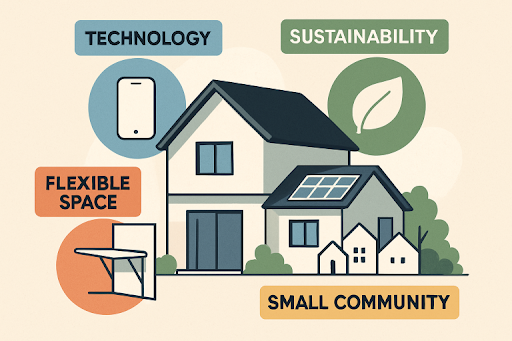The homebuying landscape is evolving at a faster pace than ever. With shifting preferences, new priorities, and innovative approaches, modern buyers are actively influencing every aspect of the real estate market.
Whether it’s searching for Los Altos homes for sale or eco-friendly properties nationwide, buyers are leveraging technology, demanding sustainability, and pursuing more flexible lifestyles, pushing both sellers and developers to adapt rapidly.
This evolution doesn’t just affect what homes look like—it shapes how and where deals are done, what features dominate, and which communities thrive. Understanding these trends is crucial for buyers, sellers, and professionals wanting to navigate today’s competitive environment.
Prioritizing Sustainability and Energy Efficiency
Eco-conscious living is no longer just a niche. Modern homebuyers, particularly millennials and Gen Z, are seeking properties that help reduce their environmental impact. Energy-efficient appliances, smart thermostats, solar panels, and sustainable building materials are among the most sought-after features.
As highlighted in a recent Financial Times article, this shift doesn’t just appeal to the environmentally aware; reducing monthly utility costs is a practical concern for many households. Luxury markets are also catching on, with buyers demanding both comfort and responsibility.
Seeking Multifunctional and Flexible Spaces
Open floor plans are still popular, but now buyers are also drawn to homes that offer adaptability—spaces that can be easily converted into home gyms, offices, classrooms, or dedicated entertainment areas. Given that family composition and lifestyles continue to evolve, homes with multipurpose rooms and creative built-in solutions are highly desirable. Flexibility is becoming a must-have for navigating changing needs or unexpected life events.

Emphasizing Health and Wellness Features
Increasingly, homebuyers are prioritizing features that directly contribute to both physical and mental well-being. Homes with large windows for natural light, enhanced air filtration systems, and good indoor air quality are in demand.
According to Homesight, access to green spaces, private gardens, and proximity to parks or walking trails rank much higher on the priority scale. This focus on wellness is influencing everything from construction materials to neighborhood design.
Valuing Community and Connectivity
In an era of growing digital connectivity, people yearn for genuine, real-world communities. Buyers are drawn to neighborhoods with strong social bonds, communal spaces, and amenities such as co-working lounges, dog parks, or community gardens, as well as opportunities to engage with their neighbors.
This desire for connection is influencing both suburban development and the resurgence of urban villages, which prioritize walkability and shared public spaces.
Considering Alternative Financing and Ownership Models
Affordability remains a significant hurdle in many markets, prompting innovative solutions. From co-buying with friends or relatives to exploring rent-to-own opportunities, modern buyers are broadening their search for paths to homeownership.
Creative financing options help overcome down payment and monthly payment obstacles, making it possible for more people to achieve their dream of owning a home.
Influencing Market Dynamics and Development Trends
Collectively, these shifting priorities are driving change throughout the real estate sector. Developers, builders, and sellers are innovating with energy-efficient products, wellness-focused community planning, and adaptable homes.
Marketing strategies are also evolving, emphasizing features that align with modern values and the digital-first approach of today’s buyers. As the market evolves, opportunities abound for those willing to track these trends and shape offerings accordingly.
Staying attuned to homebuyer trends is essential for anyone navigating the residential market. As preferences change, those who understand what modern buyers want—and why—will be best positioned to succeed in this transformative era of real estate.
